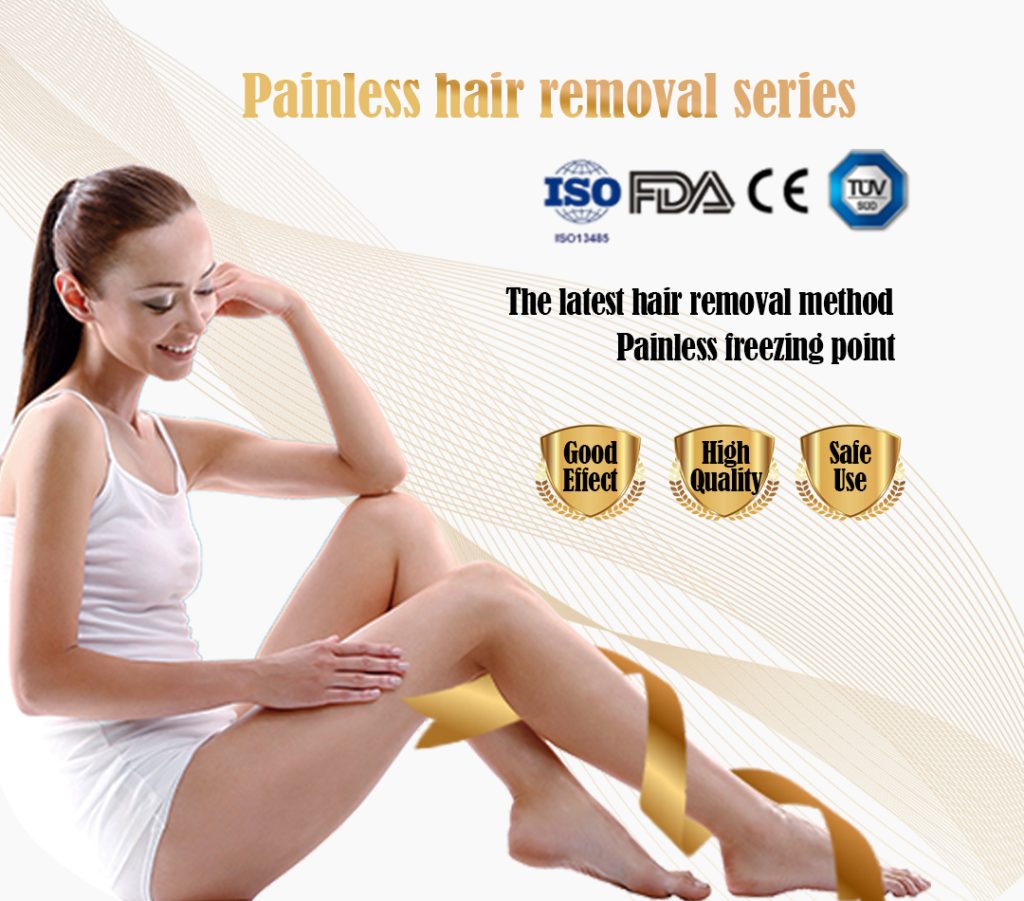HIFU Machine: The Non-Surgical Facelift Revolution for Salons
December 08, 2025Difference Between IPL and Diode Laser Hair Removal
May 24,2022
The key principle behind laser hair removal is to match a specific wavelength of light and pulse duration to a specific target, the melanin in the hair follicle, while avoiding surrounding tissue areas. Melanin is the natural color-related pigment in our skin and hair.

The key to the success of diode laser hair removal is the delivery of high energy into the skin. The energy is selectively absorbed by the melanin around the hair follicle without affecting the surrounding tissue.
Diode lasers use a single wavelength of light and have a high cut rate in melanin. As melanin heats up, it destroys the roots and blood flow to the hair follicles, permanently inhibiting hair growth. Laser hair removal machines use refrigerated contact cooling to protect the skin surface, making the treatment a comfortable, painless experience for the patient. Diode lasers provide high-frequency, low-flux pulses that are safe for use on all skin types.
IPL (Intense Pulsed Light) technology is not technically laser therapy. It uses a broad spectrum of light with multiple wavelengths, which means it causes a lack of energy concentration around the hair and skin areas. As a result, a substantial waste of energy and less selective absorption in the hair follicle results in less effective damage to the hair. Using broadband light also increases potential side effects, such as burns or hyperpigmentation, especially if integrated cooling is not used. IPL is usually only suitable for lighter skin types in most cases.
In discussing the specific techniques for this procedure, we can investigate two basic types: intense pulsed light (IPL) and laser-based methods. While hair removal lasers typically use a single wavelength or three bands, IPL treatment releases a broad spectrum or band of light energy. Visible spectrum light is about 400-700nm, and infrared is 700-1400nm. IPL devices typically emit indiscriminate light energy from 400-1200nm, and most devices will have additional filters that limit light energy a little more than these parameters. Shorter wavelengths (400-550nm) are more effective for red and light hair colors, while longer wavelengths (550nm+) target darker skin and hair colors.
Because of these filters, users have long believed that broad-spectrum IPL therapy has multiple uses, depending on the procedure. However, this same versatility is why IPL treatments are often underrepresented. IPL treatment has a much greater effect on the skin due to special hemoglobin and melanin absorption. IPL lasers may be effective for grayer hair types, but are therefore ineffective or unsafe to use when treating darker skin types (i.e., Fitzpatrick types III-VI). Practitioners should not recommend IPL therapy for melanin-rich patients. Therefore, these devices are far less suitable than their diode counterparts.
The above treatments mean that IPL techniques often require more regular and long-term hair loss treatments. Compared to IPL, diode lasers will work more efficiently, reduce patient discomfort (integrated cooling), and treat more skin and hair types at the same time.
The key principle behind laser hair removal is to match a specific wavelength of light and pulse duration to a specific target, the melanin in the hair follicle, while avoiding surrounding tissue areas. Melanin is the natural color-related pigment in our skin and hair.
The key to the success of laser hair removal is the delivery of high energy into the skin for selective absorption by the melanin surrounding the hair follicle while protecting the surrounding tissue. Diode lasers use a single wavelength of light that has high absorption in melanin. At the same time, it incorporates skin cooling to protect the skin surface. As melanin heats up, it damages the hair roots and blood flow to the follicles and permanently disables the hair. Diode lasers capable of delivering high-frequency, low-energy pulses are safe for use on all skin types
IPL has been popular in the past because it is a lower cost technique, but it has limitations in power and cooling, so the treatment may be less effective, has higher potential side effects, and is more efficient than the latest diode laser technology uncomfortable. The Primelase Laser is the most powerful diode laser for hair removal in the world. With this power, it’s also the fastest program, handling a full leg in 10-15 minutes. It also delivers each pulse very quickly (unique short pulse duration), which makes it as effective on lighter thinner hair as on darker, thicker hair, so you’ll get less treatment For maximum effect, the IPL laser saves time and money.
Is IPL or diode technology better for laser hair removal?
First, it’s helpful to know some terminology. Laser hair removal uses the physical properties of light to target hair. One might argue that “laser hair removal” is an industry term coined for marketing purposes. According to the FDA, laser treatments produce “permanent hair loss” rather than complete and permanent removal. This difference is due to the way these lasers work. Essentially, the laser targets the hair shaft during the anagen phase of periodic hair growth, or when the hair is actively growing. When the laser applies energy to the hair shaft, the energy causes thermal damage to the underlying hair follicles and nipples, reducing their ability to produce hair in the future. Hair may grow less frequently, be less dense, and the hair shafts produced by the follicles may be thinner or even lighter in color. These aspects make laser hair removal more accurately known as permanent hair removal.